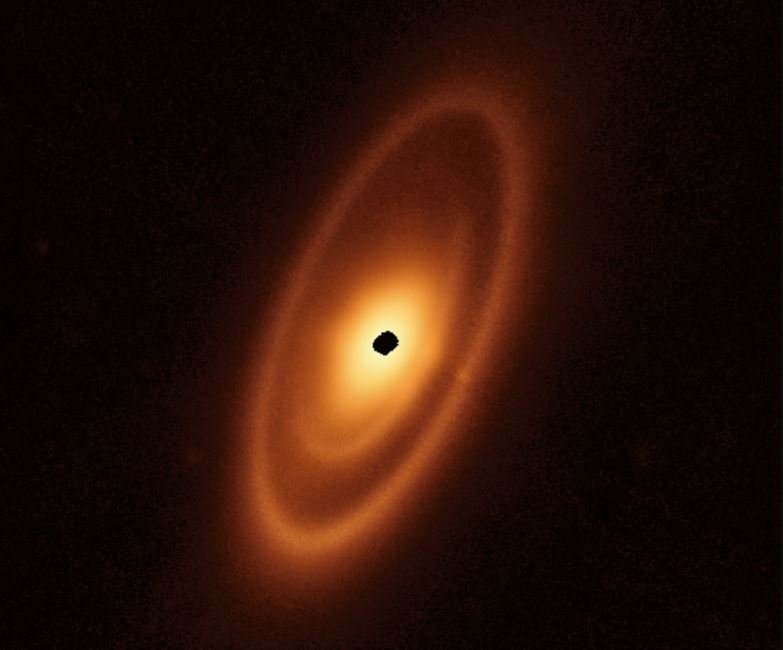In recent months, the James Webb Space Telescope (JWST) has provided a variety of images from space, including the Carina Nebula, Stephan’s Quintet, Jupiter, among other areas of space. Now, JWST has caught a photo It is from the first asteroid belt located outside our solar system, in the constellation Piscis Austrinus, about 25 light-years from Earth.
JWST’s infrared system was used to collect data from the dust ring system around it. The young star Fomalhaut, consisting of three asteroid belts stretching about 23 billion kilometers. The star was first discovered by the Infrared Astronomical Satellite (IRAS) space observatory in 1983, but has since been observed by many other instruments.
In a study led by researchers at the University of Arizona and published in the scientific journal Nature Astronomy, Scientists explain that dust belts are formed from debris from collisions of larger celestial bodies.such as comets and asteroids; Two of these discs had not been observed until now.
“I don’t think it’s a huge leap to say that there is probably a really interesting planetary system around the star,” said George Rieke, co-author of the study and professor of astronomy.
Fomalhaut’s Invisible Planets
The Hubble Space Telescope had already photographed Fomalhaut’s outer belt, but no equipment was able to obtain detailed information about the inner structure of the belt. At the time, one of the star’s features indicated the presence of protoplanetaries in the making, something that was also suggested in the new study.
The study may help better understand how the formation of a disk is responsible for the birth of planets – a phenomenon called a protoplanetary disk. Either way, scientists will continue to study the discovery to learn more about the complexity of the Fomahault star’s planetary system.
“I would describe Fomalhaut as the first example of disks of debris found elsewhere in our galaxy, because it has similar components to what we have in our own planetary system. By looking at patterns of these rings, we can really start to get a little sketch of what a planetary system should look like — “If we can really get a deep enough picture to see the suspected planets,” he said. András Gáspár, professor of astronomy at the University of Arizona.
The discovery of the two rings suggests that the star system must have some hidden planets that affect the shape of the belt around the star Fomalhaut. In summary, scientists believe that belts are formed from asteroid remnants and that these ‘invisible’ planets have gravitational effects.
Source: Tec Mundo
I’m Blaine Morgan, an experienced journalist and writer with over 8 years of experience in the tech industry. My expertise lies in writing about technology news and trends, covering everything from cutting-edge gadgets to emerging software developments. I’ve written for several leading publications including Gadget Onus where I am an author.













